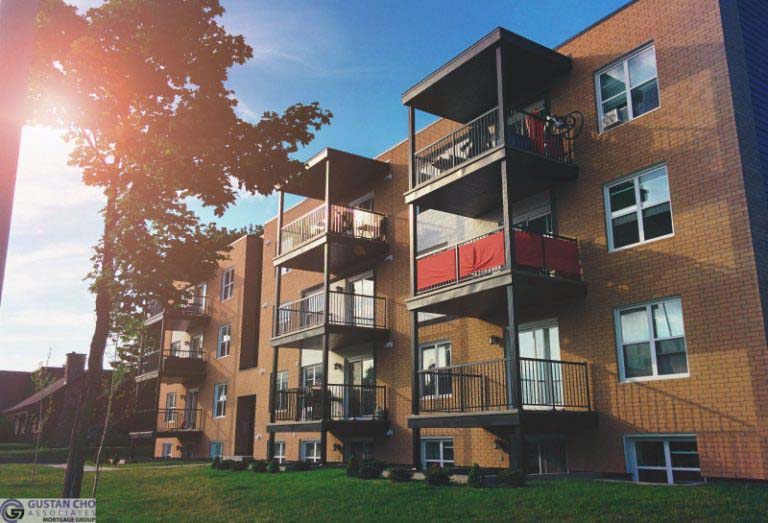This guide covers how homeowners insurance deductibles work. Homeowners insurance deductibles used to be straightforward. It was the dollar amount stated in your homeowner’s insurance policy that you’d pay out of pocket before any insurance coverage kicked in. For example, you leaked, and your home suffered severe water damage. You’d then call your insurance company and file a claim.
Your homeowners’ insurance company would recommend that you get three different estimates from three different independent companies to make sure you are getting the correct diagnosis.
Once those estimates have been collected, the insurance company will then pay for the repairs to your work. So, let’s say you had $6500 in damage. If your homeowners’ insurance deductibles were $500, your insurance company would subsequently deduct that amount from the claim and pay the balance of $6000; it used to be straightforward. In the following paragraphs, Brent Norkus of Goosehead Insurance will cover how homeowners insurance deductibles work.
What is a Deductible on a Homeowners Insurance Policy
A homeowners insurance deductible is the amount of money you, as the policyholder, are responsible for paying out of pocket before your insurance coverage kicks in to cover a claim. It’s a form of self-insurance that helps keep insurance premiums more affordable for policyholders.
How Homeowners Insurance Policies Work Once You File a Claim
In this section, we will cover how a homeowners insurance deductible typically works. When you purchase a homeowners insurance policy, you’ll have the option to choose a deductible amount. Common deductible amounts are $500, $1,000, $2,500, or more. The higher the deductible you choose, the lower your insurance premium is likely to be, but keep in mind that you’ll have to pay more out of pocket in the event of a claim. If you experience a covered loss, such as damage to your home or belongings due to a covered peril (like fire, theft, or windstorm), you’ll need to file a claim with your insurance company.
Payment of Deductible
After you file a claim, your insurance company will assess the damage and determine the amount they will pay to cover the loss. You are then responsible for paying the deductible amount out of pocket. Once you’ve paid your deductible, the insurance company will cover the remaining eligible costs, up to the policy’s limits.
If you’ve paid for repairs or replacements before receiving your insurance payout, you can submit receipts to your insurance company for reimbursement, up to the covered amount.
It’s important to note that the deductible applies to each separate claim, so if you have multiple claims within a policy period, you may need to pay the deductible for each one. Additionally, some insurance policies may have separate deductibles for different types of perils (e.g., windstorm, hail, earthquake), so be sure to review your policy to understand how deductibles apply to specific situations.
How Homeowners Insurance Deductibles Work
However, nowadays, like so many other changes, insurance companies have changed, too, offering different types of deductible programs that make matters much more complex. What happens with deductibles these days? Here are the three leading major trends: HIGHER homeowners insurance deductibles.
Deductibles based on a flat dollar amount have increased. While $250 was relatively common, many insurance companies now encourage customers to take higher deductibles.
In fact, manyhomeowners insurance companies don’t even offer lower deductibles anymore. But they’re not the only ones driving this trend. During the recession of 2007-2009 and the subsequent recovery period, many homeowners chose higher deductibles to keep their monthly payments lower. In most cases, people often felt more comfortable paying a higher deductible even after their financial situation improved.
Split or Matrix Homeowners Insurance Deductibles
Keep in mind that while choosing a higher deductible can lower your premium, it’s essential to select a deductible amount that you can comfortably afford to pay out of pocket in the event of a claim. Insurance companies offer this type of deductible for people who want different deductibles for different losses. For example, in some regions of the country, insurers will allow you to have one deductible for wind and hail damage and another for everything else.
Percentage of Homeowners Insurance Deductibles
These deductibles have been popular in many states and are slowly becoming more popular nationwide. Rather than being set at a flat dollar amount, the deductible is stated on a percentage.
The deductible stated is typically 1 or 2 percent of your dwelling coverage or the amount your policy states you’ll need to completely rebuild your home (not including content replacement).
So, for example, if your home coverage was for $500,000 and your deductible was 1 percent, you’d pay $ 5,000 out of pocket for any repairs. Percentage deductibles often require paying more OOP costs (out of pocket) than your conventional flat dollar amount deductible, but they also typically come with a lower premium.
Homeowners Insurance Deductibles and Choosing The Right Deductible For You
So, how do you choose the right deductible for you? With all these new options, it can be a bit difficult to decide what’s best for you. Generally, insurance is taken out to protect you from large losses, not so much for the little things you typically can afford to repair yourself, which is usually why most people choose a higher deductible.
If you decide to go that route, remember that you’ll retain more of the claim cost should something substantial happen to your house. In other words, if your deductible is $ 5,000, you’ll need to come up with that should you experience a significant loss.
Whatever you decide to do, always carefully read through your policy, including your renewal packet, each year. Whenever you have questions, be sure to talk to your insurance agent. Better to take the time to clarify any concerns now rather than later and be surprised.
Why Choose Us at Gustan Cho Associates
Gustan Cho Associates is a national mortgage lender licensed in 48 states, including Washington, DC, Puerto Rico, and the U.S. Virgin Islands. The team at Gustan Cho Associates are experts in all areas of commercial and residential mortgage lending. We are experts in all areas of residential loans and specialize in originating and funding FHA, VA, USDA, Reverse Mortgages, FHA 203k, Conventional, Jumbo, non-QM loans, and Commercial Mortgages.
Many loan officers at Gustan Cho Associates are dually licensed realtors and loan officers as well as veteran real estate investors. Over 80% of our borrowers at Gustan Cho Associates are folks who could not qualify at other mortgage companies.
Gustan Cho Associates has a lending network of 220 wholesale mortgage lenders. We have the best of the best agency wholesale lenders with no lender overlays and great pricing as well as dozens of non-prime and alternative lending partners with their own niche on non-QM loans. We have a large commercial lending platform to cater to every type of commercial real estate investor in today’s marketplace. Gustan Cho Associates has a national reputation for being a one-stop lending shop.









